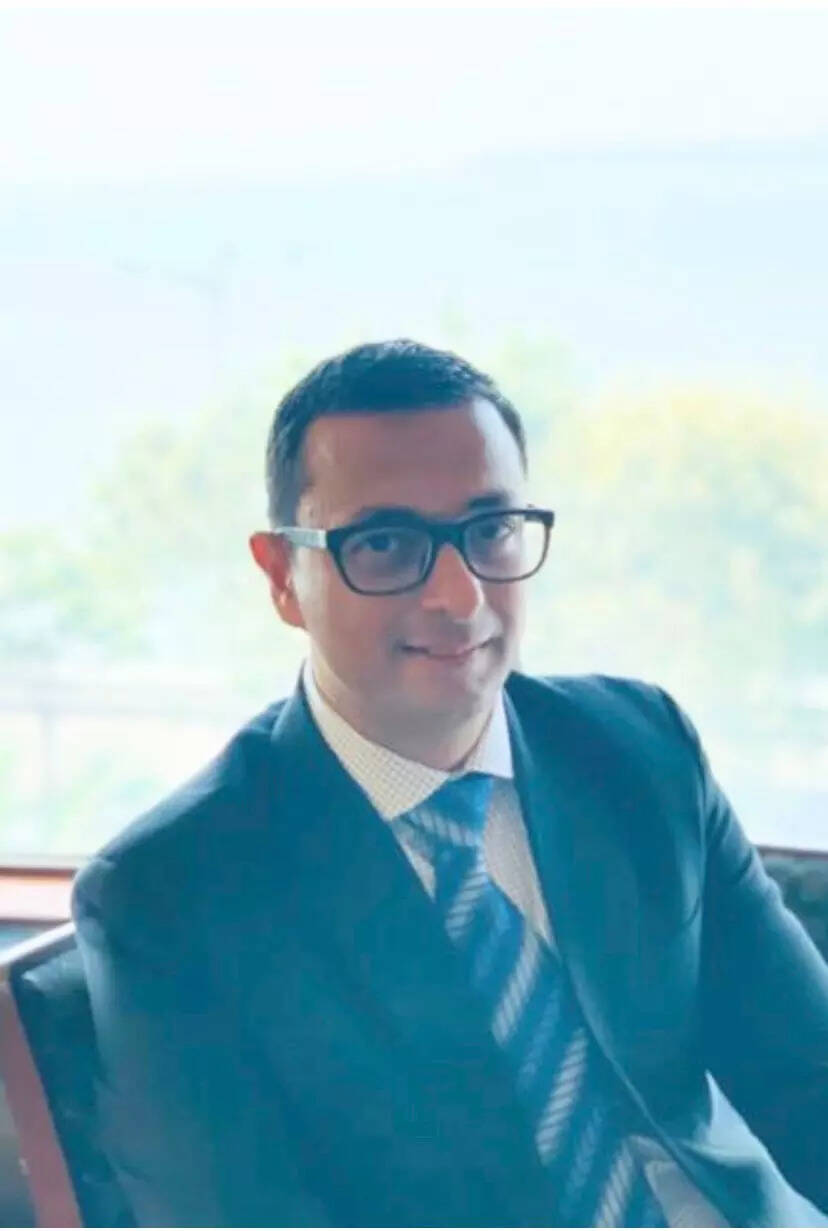
The Legal Strategist: Zameer Nathani on Navigating Law, Business, and the Digital Tipping Point
Mr. Zameer Nathani, currently Global General Counsel at D-Neg India Ltd., Nathani has held senior legal leadership roles at Zee, Viacom18, Balaji, Raymond, Reliance ADA Group, and CarDekho. Known for his legal dexterity across media law, M&A, IP, and corporate governance, he’s also a committed educator and policy advocate. In this wide-ranging conversation, we explore how General Counsels are adapting to AI, regulatory ambiguity, and an increasingly global compliance matrix and he extensively speaks about his leadership that he learned from his alma mater Harvard Business School.
Q: You’ve worked across highly disruptive sectors—from OTT to gaming and now AI. How have you built strategic legal frameworks to pre-empt risks in such fluid environments?
Zameer Nathani: My legal journey started in the era of Aquaguard and early mobile phones, and since then, I’ve worked with Reliance, Balaji, Raymond, CarDekho, and now D-Neg. One key approach has always been to anticipate regulation where there is none. For instance, in the early OTT and e-commerce days, we relied on foundational tools—terms and conditions, cookie policies, and copyright notices—because specific laws didn’t exist. At Balaji, we proposed a self-regulatory model for OTT content, inspired by television regulation. Thankfully, the government hasn’t imposed strict censorship yet, though that’s still being debated. With AI, the applicable laws today include the IT Act, intermediary guidelines, and e-commerce rules. These are sufficient for now. My firm view is that bringing in laws prematurely can kill innovation. When we over-legislate early, companies get spooked by potential liabilities—especially in boardrooms where risk appetite is low.
Q: But isn’t the delay in codifying laws like DPDP or updating the IT Act leaving a dangerous vacuum?
Nathani: The fear of a legal vacuum is valid, but overcorrection is riskier. Look at autonomous vehicles or AI-based consumer tools—if we’d regulated them in infancy, we’d have stifled progress. We must allow innovation to mature.
Besides, existing laws already cover a lot. The IT Act, contract law, intermediary guidelines, and even the IPC apply to AI, deepfakes, impersonation—you name it. We have enough legal muscle for now. Once the tech stabilizes, targeted laws can be brought in. Until then, let’s not rush to regulate imagination.
Q: Can you give a specific example where a regulatory change forced you to pivot business strategy in real time?
Nathani: Absolutely. At Reliance, we ran a gaming business where the VAT department taxed physical gaming CDs but not online games. That created a competitive disadvantage. We challenged this disparity with senior counsel Harish Salve, hosted our games on Reliance’s servers, and reclassified them as online services—nullifying the VAT.
Another moment was during the OTT debates. There were heated arguments on censorship, but we maintained that home-viewing is private. Unless there’s tangible harm—like corrupting youth—it’s debatable whether the state should interfere.
In AI, the bigger challenges are now emerging:
- IP ownership – If an AI builds a model, who owns it?
- Data privacy – Could someone sue years later claiming their data trained your model?
- Jurisdiction – With blockchain or Swift-based transactions, where does the litigation lie—India, Europe, or the U.S.? These unresolved issues are already on global court dockets.
Q: Are India’s data privacy laws like the DPDP Act ready to handle these questions?
Nathani: They’re a good start. Earlier, we had separate definitions for personal and sensitive data. Now, it’s unified. The DPDP Act addresses core concerns, and once the rules are notified, we’ll have a functional compliance framework.
But tech is outpacing law. For instance, we now see the rise of agentic AI—legal, financial, or marketing agents powered by LLMs. These will bring fresh privacy dilemmas, and yes, the law will need to evolve. But for now, DPDP is aligned well enough to cover existing AI models and data pipelines.
Q: In deal-heavy settings—whether M&A or cross-border licensing—how do you balance commercial urgency with legal prudence?
Nathani: Deal-making is high-pressure. The CEO may have agreed to the commercial terms already, and now legal has to stress-test the documentation. First, we ensure strong representations and warranties with fallback options—what if the deal goes south? Second, we assess governance and culture fit—especially in M&A. Will the acquired team respect the acquiring company’s ethics and strategic direction? Third, we check for strong IP protection. If the company has no patents or trademarks, the product may be great today but vulnerable tomorrow. And finally, limitation of liability—because the worst-case scenario is always one clause away.
Q: Describe a time when you had to convince the leadership team to follow a legally sound but commercially resisted path.
Nathani: Leadership is about five pillars—regardless of your domain.
- Leadership – Take initiative, lead from the front.
- Strategy – Always think ahead—3 months, 2 years, 5 years. Culture – Integrity and ethics aren’t optional. They define the business.
- Operational efficiency – Can we do this faster or better using tech?
Execution – Planning without action is just noise. When I’ve had to push back on commercially tempting decisions, I use these five lenses. For instance, if something looks profitable but risks violating ethics or IP norms, I make it clear that the reputational cost could be higher than the revenue. Culture and credibility are slow to build, quick to lose.
Q: You’ve shaped IP and legal strategy across diverse industries—media, FMCG, tech, entertainment. How do you ensure IP portfolios go beyond protection and support long-term monetization and brand growth?
Nathani: Whenever you develop any intellectual property, the first thing you evaluate is its commercial potential. Let’s say you invent a small hardware technology—maybe in furniture design. You might file a patent, but what value will that patent truly generate? How do you market and monetize it? An IP portfolio must be built around valuation, commercialization, and lifecycle exploitation. Take Apple, for instance—their IP portfolio includes not just the hardware, but the software, ecosystem, app interfaces, and design. That’s why they’re a trillion-dollar company. IP valuation comes from market capture. The World Intellectual Property Organization (WIPO) defines an IP portfolio as encompassing both value and commercialization. Without commercialization, the portfolio is of limited use.
Q: You’ve been an early advocate in tackling cybercrime and misinformation. How have you institutionalized that advocacy into corporate policy or enforcement?
Nathani:I was among the first technology lawyers in India when the IT Act came into force. Back then, enforcement was nascent—officers would seize monitors instead of CPUs! We’ve come a long way. One of the most impactful cases was with Reliance in 2001—an e-commerce fraud worth ₹1 crore then (worth ₹8–10 crore today). We collaborated with the cybercrime cell in Mumbai and laid a full-blown trap near Jaipur. It took days—tracking criminals via motorcycles, buses, and even laying fake delivery parcels packed with stones. We eventually nabbed the mastermind and discovered a stash of high-end tech goods. That’s the kind of aggressive enforcement we embedded into corporate policy. Similarly, we tackled counterfeit operations for Raymond. The broader lesson is: when the stakes are high, don’t just send notices. Conduct raids. Set a precedent. Show you’re willing to act.
Q: With deepfakes and GenAI misuse now a reputational threat, how should global companies respond legally and strategically?
Nathani:Three things—first, always take consent when using third-party content with AI. Second, include a clear disclaimer that your AI is experimental. Most companies like Cardekho.com (where I’ve also contributed) have added this to their T&Cs. Third, limit liability in those disclaimers. You can’t afford to be sued for ₹100 crore over an AI error. Lastly, insure against such liabilities. AI and data mishandling can’t always be predicted—insurance is your safety net.
Q: So legal disclaimers actually hold up in court?
Nathani:They can, but not always. Take Facebook and Cambridge Analytica. Despite consent and contracts, they still faced global scrutiny. Even in India, courts could dismiss boilerplate disclaimers if there’s mass data misuse. That’s why I stress: consent, disclaimer, limitation of liability, and insurance. It’s not about escaping responsibility, it’s about responsible legal preparedness.
Q: You mentor legal professionals across industries. What’s your advice to help them build commercial judgment and strategic leadership?
Nathani:Legal professionals need to stop operating in silos. I’ve pursued an executive MBA from NMIMS, Harvard’s Program for Leadership Development, and the AMP from Harvard Business School—where I shared classrooms with Ratan Tata and MasterCard’s leadership.
Law isn’t separate from business. A GC should think like a CEO. Your job is not just to draft agreements—it’s to close the deal responsibly. Take ownership of execution. Ask yourself: if I wouldn’t accept this clause in the other party’s shoes, why am I offering it? Finally, legal leadership today includes fiduciary trust—you’re in boardrooms now. So deliver business value, with governance integrity.
Q: You’ve continuously upskilled mid-career. Would you advise lawyers to pursue business and leadership training too?
Nathani:Absolutely. A law degree is not the end—it’s just the foundation. Upskilling in business, finance, leadership is essential. Governance failures—whether regulatory, ESG-related, or reputational—can destroy investor trust. Companies must move fast, but never at the cost of ethics and compliance. The speed of business must be matched with a backbone of legal foresight.
Q: ESG and DEI have become strategic priorities. How do you embed those values into legal frameworks and policies?
Nathani:Earlier, ESG clauses were just annexed guidelines in investor agreements. Today, they’re binding obligations. Investors can withdraw from a ₹5,000 crore contract if ESG norms are breached—be it on emissions, gender equity, or employee treatment.In my previous company, we underwent independent ESG audits annually. We recorded every data point—from flight emissions to electricity bills—and published an ESG report that rivaled global benchmarks. ESG isn’t optional anymore—it’s tied directly to investor confidence and brand reputation.
Q: How do you translate emerging IP and AI risks—like algorithmic bias or copyright overreach—into business strategy?
Nathani:When AI uses third-party content, you’re exposed to copyright claims. The first legal step you’ll face is a cease-and-desist notice. If you don’t act, you’re in court.
So I tell companies: always get consent for data used in AI. Add disclaimers. Limit liability. And insure your operations. For instance, if AI-generated outputs accidentally violate IP or data privacy, you might face a ₹100 crore claim. A well-drafted clause or AI liability insurance can save your business. Think Facebook–Cambridge Analytica, or Zoom’s user-data lawsuits—I know firsthand because I received shareholder compensation when Zoom settled.
Q: What are the three most consequential legal shifts businesses must prepare for over the next five years?
Nathani: One, register your AI, EV, solar or blockchain innovations as IP—first come, first served.Two, focus on data privacy and information technology laws—get consent, disclaim, limit liability, insure.Three, define jurisdiction in your contracts—especially when deploying new tech—to avoid forum shopping and litigation surprises. These are the top three areas that will define the next legal frontier.
Q: As a Harvard AMP graduate and peer to some of the world’s top CEOs, how has that shaped your board-level leadership?
Nathani: Harvard taught me five things: visionary planning (six months to 20 years out), strategic execution, value-driven governance, operational efficiency, and leadership integrity. You can’t run a great business without a great team, culture, and moral compass. Leaders I met—like the CEO of MasterCard—run billion-dollar companies with humility, because they understand the value of people and ethics. That’s why companies like General Electric or L&T survive decades—they deliver excellence without compromising their values. That’s the leadership India’s legal community must now aspire to: blending law, business, ethics, and execution into one seamless force.

